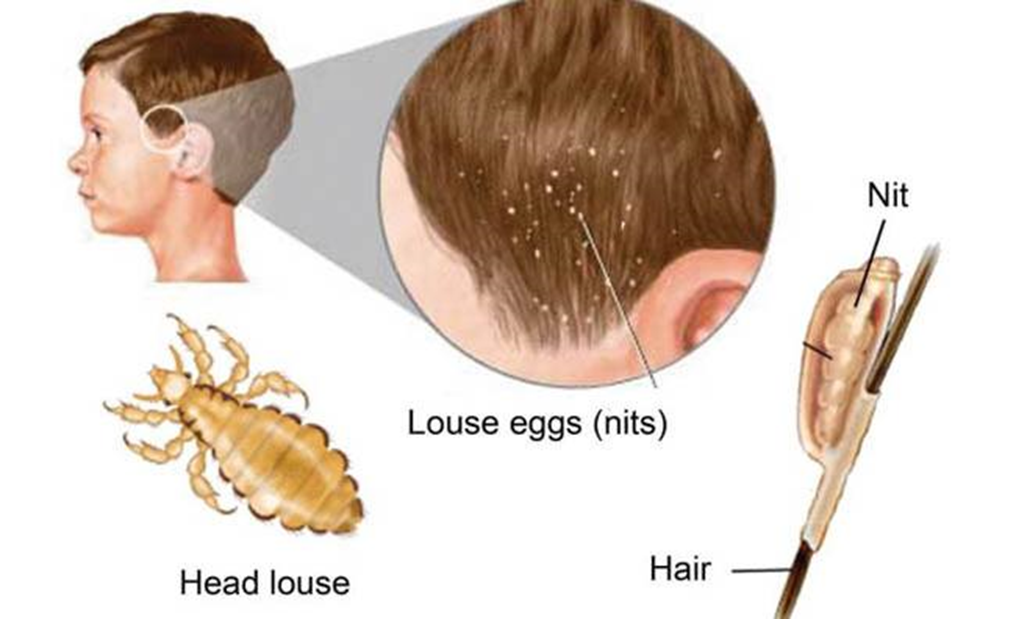A school nurse is implementing health screening. Which of the following assessment findings should the nurse recognize as the highest priority?
A child who has a BMI of 18
An adolescent who has scoliosis
An adolescent who has psoriasis
A child who has nits
The Correct Answer is D
Choice A reason: A child who has a BMI of 18 is not the highest priority, as it is within the normal range for children. BMI, or body mass index, is a measure of weight relative to height. A BMI of 18 is considered healthy for children aged 2 to 20 years, according to the Centers for Disease Control and Prevention (CDC). The nurse should monitor the child's growth and development and provide nutrition education as needed.
Choice B reason: An adolescent who has scoliosis is not the highest priority, as it is a common and usually mild condition. Scoliosis is a sideways curvature of the spine that affects about 3% of adolescents. Most cases of scoliosis are mild and do not require treatment, although some may need braces or surgery. The nurse should refer the adolescent to a specialist for further evaluation and management.
Choice C reason: An adolescent who has psoriasis is not the highest priority, as it is a chronic and non-contagious condition. Psoriasis is a skin disorder that causes red, scaly patches on the skin that may itch or burn. Psoriasis is not curable, but it can be controlled with medications, creams, or light therapy. The nurse should provide education and support to the adolescent and encourage them to seek medical care as needed.
Choice D reason: A child who has nits is the highest priority, as it indicates a parasitic infestation that can spread to others. Nits are the eggs of head lice, which are tiny insects that live on the scalp and feed on blood. Head lice can cause itching, irritation, and infection of the scalp. The nurse should isolate the child and notify the parents and the school staff. The nurse should also provide instructions on how to treat the infestation and prevent reinfestation.

Nursing Test Bank
Naxlex Comprehensive Predictor Exams
Related Questions
Correct Answer is D
Explanation
Choice A reason: Determining potential funding sources for the program is an important action, but not the first one. The nurse should first assess the needs of the target population, such as the number of older adults who need the service, their nutritional status, their preferences, and their barriers to access food.
Choice B reason: Inquiring about the availability of volunteers is an important action, but not the first one. The nurse should first assess the needs of the target population, and then plan the resources and personnel needed to implement the program.
Choice C reason: Identifying alternative solutions to address concerns is an important action, but not the first one. The nurse should first assess the needs of the target population, and then identify the possible challenges and solutions to deliver the service effectively and efficiently.
Choice D reason: Performing a needs assessment is the first action that the nurse should take, as it provides the basis for planning, implementing, and evaluating the program. A needs assessment involves collecting and analyzing data about the health status, needs, and resources of the target population and the community. It helps to identify the gaps, priorities, and goals of the program.
Correct Answer is D
Explanation
Choice A reason: You will not be taking a once weekly dose of disulfiram to help control withdrawal symptoms during treatment. Disulfiram is a medication that causes unpleasant reactions, such as nausea, vomiting, and headache, when alcohol is consumed. It is used to deter relapse, not to treat withdrawal symptoms. It is also taken daily, not weekly.
Choice B reason: Remaining physically active will not help to minimize drowsiness and chills associated with initial alcohol withdrawal. Physical activity may worsen dehydration, electrolyte imbalance, and blood pressure changes that occur during alcohol withdrawal. It may also increase the risk of seizures and delirium tremens. The nurse should monitor the client's vital signs, fluid and electrolyte status, and mental status, and administer medications as prescribed to manage withdrawal symptoms.
Choice C reason: Attending Al-Anon meetings will not help you identify a role model to assist you with making needed changes. Al-Anon is a support group for family members and friends of people with alcohol use disorder. It helps them cope with the effects of living with or caring for someone with alcohol problems. It does not provide role models or guidance for people with alcohol use disorder. The nurse should encourage the client to attend Alcoholics Anonymous (AA) meetings, which are peer support groups for people who want to stop drinking.
Choice D reason: You will begin learning functional skills to replace defense mechanisms and behaviors while in treatment. This is an appropriate statement for the nurse to include in the discussion, as it reflects one of the goals of treatment for alcohol use disorder. The nurse should help the client identify and modify the cognitive, emotional, and behavioral factors that contribute to alcohol use. The nurse should also teach the client coping skills, stress management techniques, and relapse prevention strategies.
Whether you are a student looking to ace your exams or a practicing nurse seeking to enhance your expertise , our nursing education contents will empower you with the confidence and competence to make a difference in the lives of patients and become a respected leader in the healthcare field.
Visit Naxlex, invest in your future and unlock endless possibilities with our unparalleled nursing education contents today
Report Wrong Answer on the Current Question
Do you disagree with the answer? If yes, what is your expected answer? Explain.
Kindly be descriptive with the issue you are facing.
